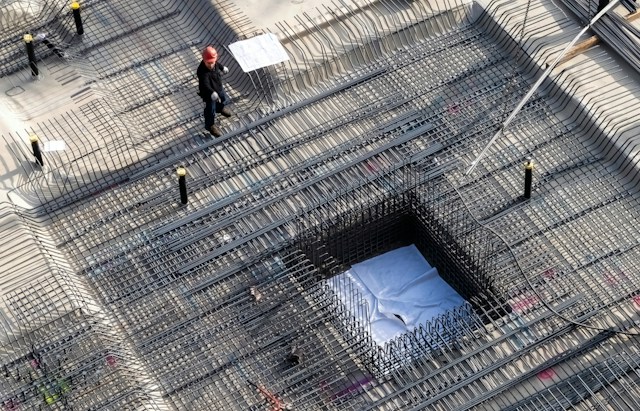Top 8 Ways Rebar Ensures Structural Integrity in Construction Projects
Constructing a sturdy building requires a strong foundation, and rebar is crucial in achieving it. These steel bars are hidden within concrete and enhance the durability and stability of structures, making them capable of withstanding even the harshest conditions.
In this article, we will explore the top eight ways rebar contributes to construction projects’ structural integrity. From reinforcing load-carrying capacity to supporting intricate architectural designs, rebar isvital in the construction industry.
Rebar Reinforces Tensile Strength
Concrete is a strong building material but can easily break when subjected to tension due to its low tensile strength. Tensile strength is crucial in resisting cracking under pressure, especially when dealing with forces like heavy loads, wind, and temperature changes.
To make concrete more resistant to tension, rebar is used. Made of steel, the rebar has high tensile strength. Adding rebar inside the concrete creates a material that combines its strengths: the compression resistance of concrete and the tension resistance of steel, making the structure more durable and resistant to breaking when pulled.
Rebar Increases Crack Resistance
Concrete is a durable material, but it can develop cracks over time due to changes in temperature, weathering, or ground movement. These cracks can weaken the building’s structural integrity and reduce its lifespan.
To prevent this issue, we use rebar. It plays a crucial role in controlling and even preventing cracks from forming. Rebar acts like a net that catches and absorbs the forces that cause cracks. We can stop and manage any cracking by incorporating rebar into the concrete. This ultimately makes the structure stronger and more durable.
Rebar Helps with Load Distribution
Proper weight distribution is crucial for the strength and durability of building structures. Uneven weight distribution can lead to cracks, instability or even complete failure of the building.
To avoid such disasters, rebar is used in construction due to its strength and flexibility. It helps to evenly distribute the weight across the entire structure, reducing the risk of damage caused by excessive weight on a single spot. Using rebar makes buildings safer, more stable and less prone to damage.
Rebar Makes Buildings Stronger in Earthquake-Prone Areas
In areas prone to earthquakes, buildings must be constructed to withstand their weight and the impact of an earthquake. Inadequate construction can result in severe damage to structures.
Adding rebar to concrete reinforces the building, making it more resilient to the forces generated by an earthquake. During an earthquake, the rebar absorbs and diffuses the energy from the shaking, decreasing the likelihood of the building collapsing.
Rebar Helps Protect Buildings from Weather Damage and Corrosion
Weather conditions such as rain, snow, and humidity can gradually cause harm to building materials such as concrete and steel. This can result in making the building less stable and robust over time.
To counteract this, rebar is mixed with concrete, protecting against weather damage. The concrete acts as a barrier, preventing moisture and other harmful elements from reaching the structure, thereby reducing the chance of steel rusting.
Moreover, using rebar coated with epoxy or stainless steel can further aid in stopping rust formation. These types of rebar make buildings more resilient in harsh weather conditions.
Rebar Helps with Complex Building Designs
Nowadays, buildings are not limited to simple square or rectangular shapes. Architects often design buildings with curves, arches, and other unique shapes. Creating such designs can be challenging using traditional materials alone.
The rebar is flexible and can be bent into any shape while remaining strong, making it perfect for complicated designs. For instance, it can be used to create a curved wall or an arch. Once the rebar is in place, concrete is poured to complete the design. The result is a sturdy, interesting structure that is less likely to crack and more stable.
Rebar Makes Buildings Better at Resisting Fire
During a fire, buildings containing rebar can maintain their structural integrity longer than those without it. The concrete in these buildings blocks heat, which helps protect the steel rebar and keeps the structure stable.
When a building is exposed to high temperatures during a fire, regular building materials can weaken and even break. However, a building can withstand heat better with reinforced concrete – the combination of concrete and rebar. This slows down the damage caused by extreme heat, giving people more time to evacuate and firefighters more time to extinguish the fire.
Rebar Accommodates Building Expansion
Rebar is an excellent material to reinforce buildings, allowing them to adjust and expand as per their requirements. Concrete structures with rebar can be easily modified or extended without compromising their strength or integrity.
As time passes, buildings must be upgraded to accommodate new demands such as increased occupancy, technological advancements, or more space. Structures reinforced with rebar can handle these changes more quickly than those without.
If you wish to expand a reinforced concrete building, you can add new rebar that connects to the existing one. This ensures that the newly constructed part of the building has the same strength and can withstand heavy loads and forces.
Final Thoughts
Rebar is an innovative material that has revolutionised the construction industry. It greatly enhances the strength of buildings, making them more resistant to fire, earthquakes, and other natural disasters. In addition, it allows for more flexibility in building design and expansion over time.
Using rebar in construction projects can also be a more cost-effective option in the long run, as it reduces the need for frequent repairs or replacements. Consequently, rebar has become an essential component of modern construction projects. Its strength and durability make it an ideal choice for projects that require long-lasting structures.
